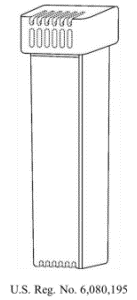The US Court of Appeals for the Federal Circuit upheld a district court’s findings of invalidity and noninfringement in a Hatch-Waxman case involving two sets of method patents directed to modulating dosages of pirfenidone, a drug used to treat idiopathic pulmonary fibrosis (IPF). The Court found that the first set of patents were obvious over the prior art and standard medical practice, while the second set were not directly infringed in light of actual physician prescription practice. Genentech, Inc. v. Sandoz Inc., Case No. 22-1595 (Fed. Cir. Dec. 22, 2022) (Newman, Lourie, Prost, JJ.) (Newman, J., dissenting).
Sandoz submitted two abbreviated new drug applications (ANDAs) for approval to market a generic version of pirfenidone, which Genentech sells under the brand name Esbriet®. Genentech sued Sandoz under the Hatch-Waxman Act, asserting that Sandoz’s generic version would induce infringement of two sets of patents: one directed to modifying dosages of pirfenidone in patients with abnormal liver biomarkers (LFT patents), and the other directed to avoiding adverse interactions in patients also taking fluvoxamine (DDI patents).
The LFT patents are directed to methods of administering pirfenidone to a patient who has exhibited Grade 2 abnormalities in liver function biomarkers alanine transaminase (ALT) and/or aspartate transaminase (AST) in response to pirfenidone. The LFT patents generally recite the following administration options:
- Temporarily reducing the dose before returning to the full dose
- Maintaining the full dose
- Reducing the dose
- Temporarily discontinuing pirfenidone before returning to the full dose
- Temporarily discontinuing pirfenidone before returning to a reduced dose.
Sandoz’s proposed label included a “Dosage Modification due to Elevated Liver Enzymes” section, which stated that if a patient exhibits grade 2 elevations of ALT and/or AST, “[t]he full daily dosage may be maintained, if clinically appropriate, or reduced or interrupted (e.g., until liver chemistry tests are within normal limits) with subsequent re-titration to the full dosage as tolerated.” Genentech argued that these instructions constituted induced infringement of the LFT patents. The district court disagreed and held that the LFT patents were obvious over the prior art and standard medical practice and that the defendant would not induce infringement because the labels “merely described” the infringing uses but did not recommend them.
The DDI patents are directed to methods for avoiding adverse interactions between pirfenidone and fluvoxamine and generally involve the steps of discontinuing fluvoxamine or modifying the dose of pirfenidone and continuing fluvoxamine. Sandoz’s proposed label warned of the adverse interactions between pirfenidone and fluvoxamine and stated that fluvoxamine should be discontinued prior to administering pirfenidone or the dose of pirfenidone should be reduced. Genentech similarly argued that these instructions constituted induced infringement of its DDI patents, but the district court held that there was insufficient evidence for infringement because Genentech had not shown that a patient would actually be prescribed both pirfenidone and fluvoxamine in practice.
Genentech appealed the district court’s holdings with respect to both the LFT and DDI patents.
LFT Patents
The Federal Circuit first observed that “varying doses in response to the occurrence [...]
Continue Reading
read more


 Subscribe
Subscribe



